INNOVATION IN A POST-COVID-19 SCENARIO | article | Wednesday, November 24, 2021
MORE HUMAN THAN EVER

“What’s between us?” is the question that passersby have been seeing since October 2, 2021, when they go through the square in front of Centre Pompidou in Paris. The phrase —materialized in a huge neon installation measuring 43 meters by 3 meters on the museum’s façade— is the work of Tim Etchells. The artist fires the sharp question about what we share, what unites us and what separates us; a questioning addressed to friends, lovers, neighbors, colleagues and citizens. The mandatory isolation imposed during the health crisis caused by COVID-19 has provoked a tide of reflections on the social condition of the human being. In particular, on the factors that contribute to personal well-being, with special attention to the influence of the relationships we establish face-to-face with family, friends and strangers. The evidence that we need others, even in a society rewarding individualism, is one of the facts that will remain in the post-pandemic scenario.
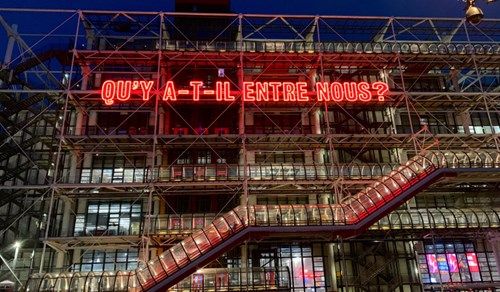
After the most critical moments have passed, with the vaccination roll-outs well advanced and the reduction of meeting and travel restrictions, people have decided to resume physical meetings to socialize, while reducing virtual meetings that were feared to dominate the scene. The primary human wish to feel involved with a tangible community prevails. But individuals are aware that they are acting in a context of latent risks, and that there is a change in what is shared, with whom and in what way. The Venice Biennale of Architecture 2021, curated by Hashim Sarkis, proposed the theme “How will we live together?” The Nordic pavilion presented the exhibition What We Share: A Model for Co-living based on the question “What are you willing to share with others?” for which the Helen & Hard studio invited a group of people to work with the architects and develop a co-living project with a series of shared functions. All residents were asked how much they were willing to share with their neighbors. The pavilion shows how collaboration and spatial design can create a sustainable community and living environment.
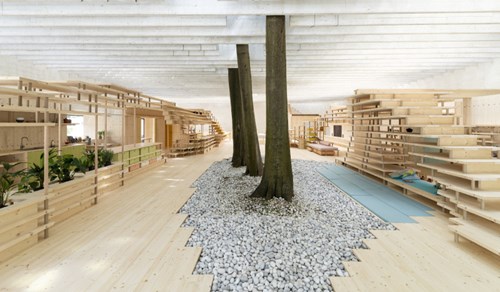
Sociologist Rebecca G. Adams of the University of North Carolina at Greensboro states in a story in the New York Times (27/Mar/2021) that the pandemic “has changed the way we interact, we stopped exploring, often limiting our rare encounters to small groups of trusted close ones. We didn’t get new ones. We’re not picking up new casual friends. We don’t know what the long-lasting effect of these social disruptions will be.” After a period of prioritizing primary ties —family and close friends— it is time to diversify daily contacts that contribute to personal well-being. The firm Unemori Architects designed the Kitakami Children Health & Support Center, in Japan, whose central space has undulating floors and ceilings, bridges made of nets, transparent circular windows and educational games to make children’s medical visits more fun. Transcending the typology of the construction of a child care center, several seating areas were installed, with different textures and heights, as a public meeting point in the lobby to encourage conversation among diverse families.
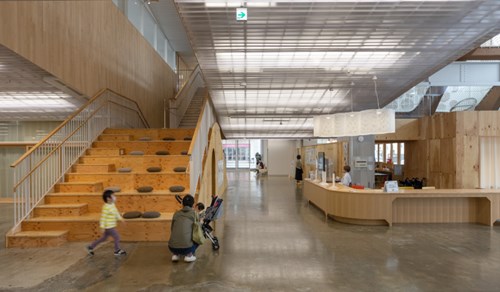
The pandemic has unfolded the importance of building close safety nets to improve the quality of life and respond collectively to future crises. In an article published in The Atlantic (27/Jan/2021), Amanda Mull uses the concept “weak ties” —coined by Stanford University sociologist Mark Granovetter in the 1970s— to describe those acquaintances who do not reach the status of friends but who form a friendly circle on a day-to-day basis. From the people with whom we share the subway every morning and exchange a greeting, to the barista who knows what coffee we drink and prepares it before we order it. They are people who recognize us and whom we recognize, who make us feel that we are not in a hostile environment but a familiar one, who affirm our humanity. Restoring that sense of belonging is a priority in order to leave behind the feeling of social estrangement experienced in the last 18 months. Sara Ricciardi, who specializes in relational design, presented the traveling performance “Urban Trader’s Revolution” during Milan Design Week 2021, inspired by the figure of the street vendor who celebrates life on the street, physical contact, the relationship between people and between people and space. A cart led by drag queens Karma B went down 5vie district, with music and stories, such as an old trinket store and curiosities in which to rediscover important urban relationships. Ricciardi says “Let’s celebrate the diversity of our expressions!” The performance is a proposal to meet again in the city after a period where we have been deprived of physical contact.
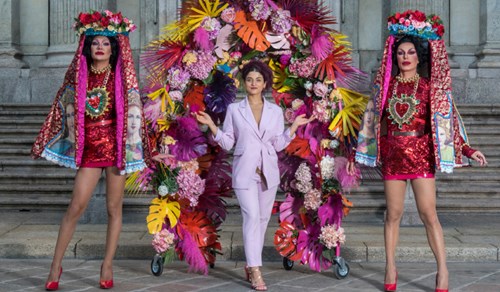
The scene of a confined and solitary life, with our eyes on the phone 24/7 during 2020, acted as the materialization of a dystopia announced for some time by the advance of certain technological habits. Although circumstances were exceptional, the scene implied a wake-up call for many people. A study conducted by Recommerce in 2021 found that 40% of French people under the age of 18 say they cannot be separated from their phone for more than 5 minutes, marking a growth in anxiety levels. Conversely, 43% of people aged 35 to 54 and 65% of those over 55 say they can cut off cell phone use without too much trouble. This data shapes current socialization processes and limit intergenerational ties.
Strategies allowing people to re-engage analogically with others in a playful way are increasingly necessary. Japanese designer and music artist Yuri Suzuki has created “Sonic Bloom”, a public, interactive, multi-sensory installation that explores the nature of communication through sound and invites Londoners to reconnect with others and interact with their environment after a year of isolation. Located in Brown Hart Gardens, the installation is composed of a large colorful sculpture that resembles a flower that unfolds into multiple stems, the ends of which form horns that serve to capture and emit sound. The system amplifies sounds absorbed from the environment and carries people’s voices through its stems. Participants can listen on one side and speak on the other, while respecting social distancing. “Our goal is to foster connections with friends and strangers by creating coincidental audible moments that create a sense of community, shared creative ground and sociability,” says Suzuki.
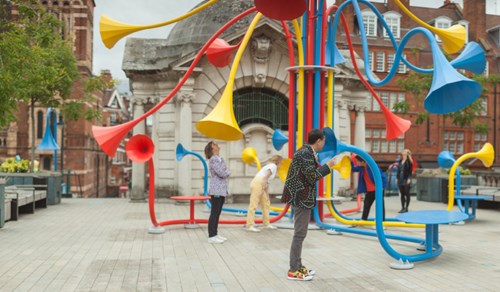
The challenge will be to rebuild cohesion and coexistence within diverse societies to ensure collective well-being.This is a complex task that demands action from all social and economic actors. A study by the Pew Research Center, conducted in 17 countries with advanced economies, indicated that a large majority affirmed that having people of different origins improves their society. In countries such as Singapore, New Zealand, United States, Canada, United Kingdom, Australia, and Taiwan, eight out of ten people view diversity positively. This represents a significant improvement over the same survey conducted four years ago. However, most people say that racial or ethnic discrimination is a problem in their society. In countries such as Italy, France, Sweden, United States and Germany, three quarters or more of respondents say it is a serious problem. Half of the respondents recognize their society as an area of conflict between people of different racial or ethnic groups. Still, racial and ethnic divisions are not considered the greatest divide in most societies, with respondents noting that conflicts between people who support different political parties are more relevant (Pew Research Center, 2021).
Establishing social ties in contexts of profound economic inequality will require taking into account contextual elements to define proposals. “Elitism Sucks” could be read on large posters in the streets of London in the spring of 2021, an action by the D.N.A. group that reflects the unease about privileges exacerbated by the pandemic. During the same period —June 2021— the "Sky Pool” was inaugurated, a 25-meter luxury swimming pool built in transparent acrylic and suspended 10 stories above the ground between the two blocks of restored Embassy Gardens buildings in Nine Elms, which became a visible symbol of housing inequality in the English capital. Embassy Gardens is an apartment complex where there are towers with units for social use and others with private apartments. Only private residents have access to the swimming pool and other amenities. Vauxhall, Nine Elms and Battersea are still deprived areas with a high proportion of public housing and poverty, in the midst of areas gentrified by the housing boom. This sparked much debate as to whether the pool represented another obscene way of displaying wealth in the face of an unequal environment and how it affected the integration of the local community.
In the post-pandemic scenario, the neighborhood universe is enhanced and acquires new functionalities to encourage encounters between neighbors. In Sweden, city dwellers have the opportunity to help redesign urban spaces near their homes. On-street parking spaces are being replaced by tables, benches and plants for common use, through prefabricated furniture modules. It’s all part of a government plan to help people improve the immediate environment around their homes. The modules, designed by Lundberg Design, can be configured to provide places to sit and eat, urban gardens, play areas, outdoor gyms, bicycle storage and electric scooter charging points.
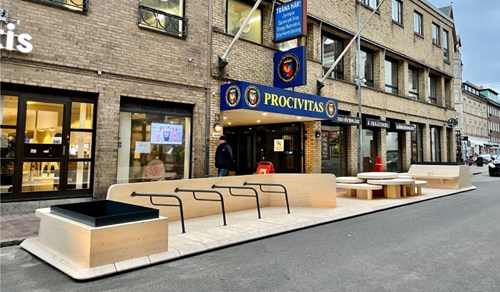
Spaces will have to become true scenarios where it is possible to establish multiple social connections with different degrees of depth. Ties with others will become increasingly necessary as the percentage of people living alone continues to rise. A 2021 Pew Research Center analysis of census data found that in 2019 approximately four out of ten adults aged 25-54 (38%) were unmarried, i.e., neither married nor living with a partner, a 9% increase from 1990, when the proportion was 29%. In several societies, the increase in the feeling of loneliness has spread in a transgenerational manner. The study by The GenWell Project and the University of Victoria in Canada found that 60% of participants reported feeling lonely many times a week, almost half (46%) reported feeling lonely every day. The rate of loneliness across all generations is above 45%, however, the youngest and oldest suffer even more: the generation born between 1997 and 2015 report the highest rates of loneliness at 66%; those born between 1925 and 1945 report a loneliness rate of 56% (The GenWell Project, 2021). In Australia, Telstra’s Talking Loneliness report found that one out of two people born between 1997 and 2015 (54%) and between 1981 and 1996 (51%) reported feeling lonely on a regular basis, a much higher figure than other generations. This could reflect how difficult the last pandemic and confinement months have been, however, the resurgence in public life could exacerbate the problem as people may be more aware of how lonely they feel (Telstra, 2021).
Private spaces could also change their nature to enhance socialization. In the Netherlands, where there are 1.3 million people over 75 years of age, the government launched the “One Against Loneliness” campaign to reduce the feeling of loneliness among the aging population, relying on a partnership between public and private actors. Jumbo supermarket chain joined in with its “talking cash registers” project. Unlike regular ones, these special cash registers called “Kletskassa” will be aimed at senior citizens and will encourage dialogue between the customer and the cashier. The experience will be expanded to 200 stores over the next few months.
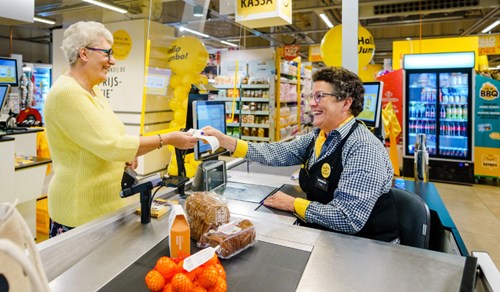
Thinking about establishing ties that transcend the immediate community is also a necessity. With the rise of nationalist currents in different countries, it is important to create strategies that encourage contact with people across borders. “Portal” is a public art experience that connects the cities of Vilnius, Lithuania and Lublin, Poland through real-time video streaming. The set-up is a huge circular door with a videoconferencing device, a camera and a screen, through which people in both cities can visually interact. There are many cases where people sit to have lunch in front of the portal to share the moment with strangers on the other side, communicating through gestures. The purpose of Benediktas Gylys Foundation, creator of the idea together with the Vilnius Technical University, is to make people reconsider the sense of unity and strengthen their empathy by establishing a digital bridge between two distant places. Other portals will be set up in different cities in the coming years.
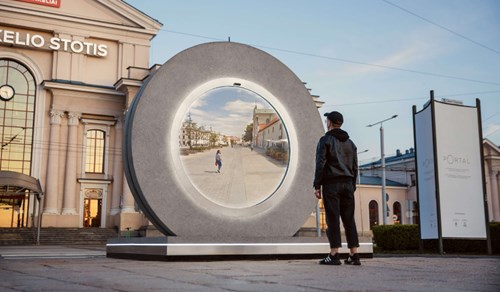
A significant portion of people will choose to continue with remote tasks to reinforce a more flexible lifestyle that could unfold in several cities throughout the year. For these new digital nomads, it will be a challenge to establish face-to-face links during their changing routines. The world of hospitality is in the process of innovating as a result of the changes in post-pandemic work dynamics. The Accor group wants to transform its lodging offer into a Flex Office platform, which allows it to provide work spaces around the world, with all the necessary amenities and technologies for travelers to work remotely, but changing location. The goal is to also integrate local spaces such as apartments, bars and museums to provide an authentic experience in each city and nurture ties between nomads and local people.
Opening spaces previously banned from the public to create new socialization scenarios will also play an important role in the future. Artist Doug Aitken designed Green Lens, a "living” work of art composed of plants and aluminum foil for Saint Laurent’s spring summer 2021 men’s fashion show in Venice. Located on the Venetian island of Certosa, the 10-pointed kaleidoscopic pavilion was covered in lush vegetation, the result of a meticulous botanical design, which created infinite reflections on the reflective material and blurred the boundaries between inside and outside. The music, composed of nature sounds recorded on the island, completed the experience. Conceived as an inclusive work, after the parade the installation remained open to the general public until the end of July.
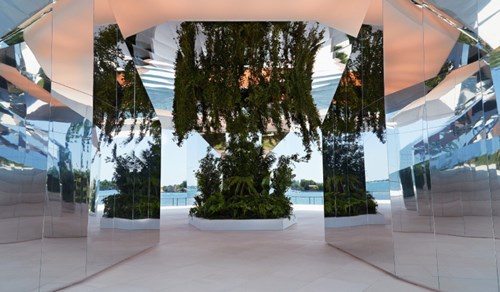
Isolation during the most pivotal times of the pandemic exposed the tensions and fragilities of certain social constructs and evidenced some of the toxic dynamics that occur, for example, in family life. Products and services that help generate healthier emotional experiences within the home will be welcome. During Milan Design Week 2021, Aran Cucine presented the “Oasi” kitchen unit created in collaboration with Stefano Boeri Architetti. Designed to bring together well-being, sustainability and coexistence, Oasi is an independent unit that contains everything needed for a satisfying dining experience: cabinets for storage, appliances for cooking and washing, and even an extendable table for dining. The main feature of the unit, however, is the tree located at its center. An irrigation system is integrated into the multifunctional kitchen unit, as well as a dedicated compost area to help fertilize the plant. According to the brand, the tree will be a place to gather and grow, as its branches will accompany the house dynamics.
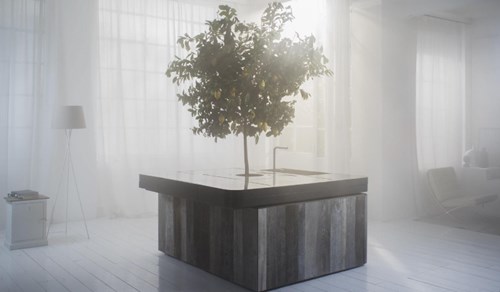
After a period of crisis in which people have experienced deep fears of becoming ill, dying and/or becoming isolated, there is an emerging demand to build emotional support and safety nets that help to cope with the feeling of fragility and provide security in an uncertain context. Individuals have come to understand that their social ties and face-to-face sharing with others play a critical role in personal well-being. Products, services and experiences that become a means to help connect and deepen relationships between people will empathize with this collective desire.Brands must understand that the human being of today is more human than ever.
